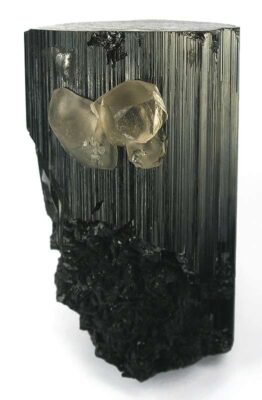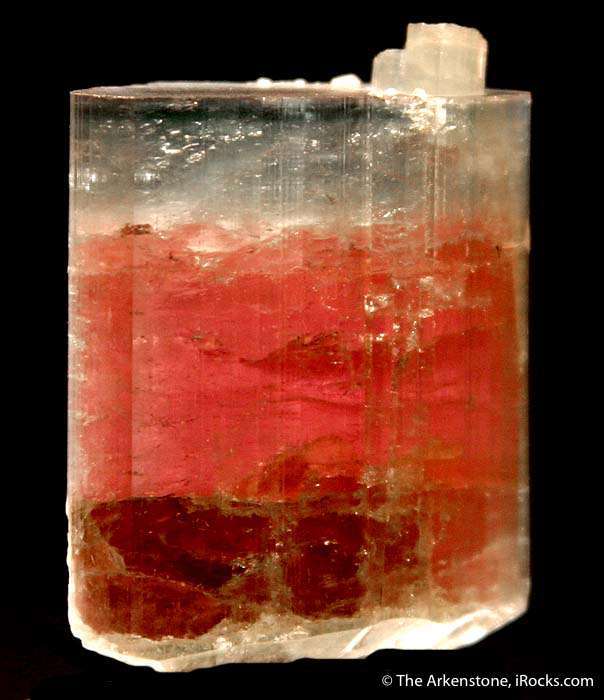Famous mines: The Pala Chief Mine, Pala, San Diego County, California
Amongst worldwide localities, the Pala Chief mine holds a special spot in the hearts of collectors, a California locality known for old fables and fine gem crystals like tourmaline and kunzite.
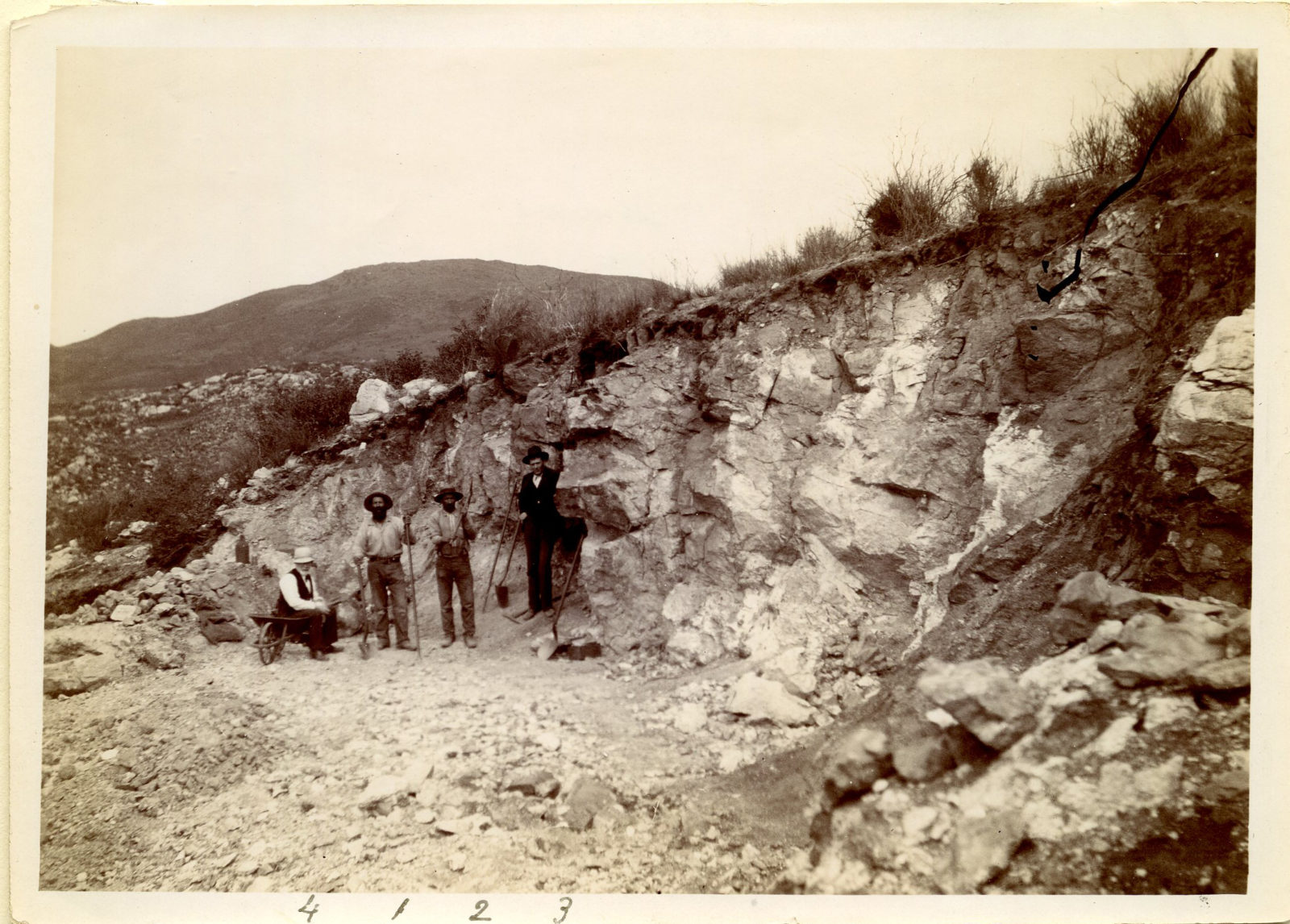
Pedro Peiletch and Frank A. Salmons. H. C Gordon photo. From the Bill Larson Library.
The history of the Pala Chief Mine is very much connected with the history of the Sickler family, as told by Peter Bancroft in 1995 in The Wrangler newsletter, a quarterly publication of the non-profit San Diego Corral of The Westerners, summarized in the next few passages.
Marion Marcellus Sickler, born 1853, came to San Diego in the late 1880s. He was a descendant of an influential pioneer family from the East Coast who immigrated to the US in 1760 and settled in Upstate New York. He had an entrepreneurial spirit, and built a grain mill near Pala with his brother, and he was prospecting for gemstones.
On one of those prospecting ventures on Heriart Hill in 1901, his two sons, Fredrick (born 1879) and Allen discovered quartz and lepidolite at a pegmatite ledge. Upon closer inspection, Frederick found “fragments of a light pink heavily striated crystal, which he assumed were tourmaline”.
On June 14, 1901, Frederik was enouraged enough by the mine to file for a claim on the land, which he called ‘White Queen Mine’. The family started working the deposit “which immediately produced good quantities of pink tourmaline, large quartz crystals, pink-colored beryl crystals […] and some small, lilac-colored crystals of a then unknown variety of gemstones”. However, as with most gemstone mines in San Diego County, the sales barely covered the expenses for mining.
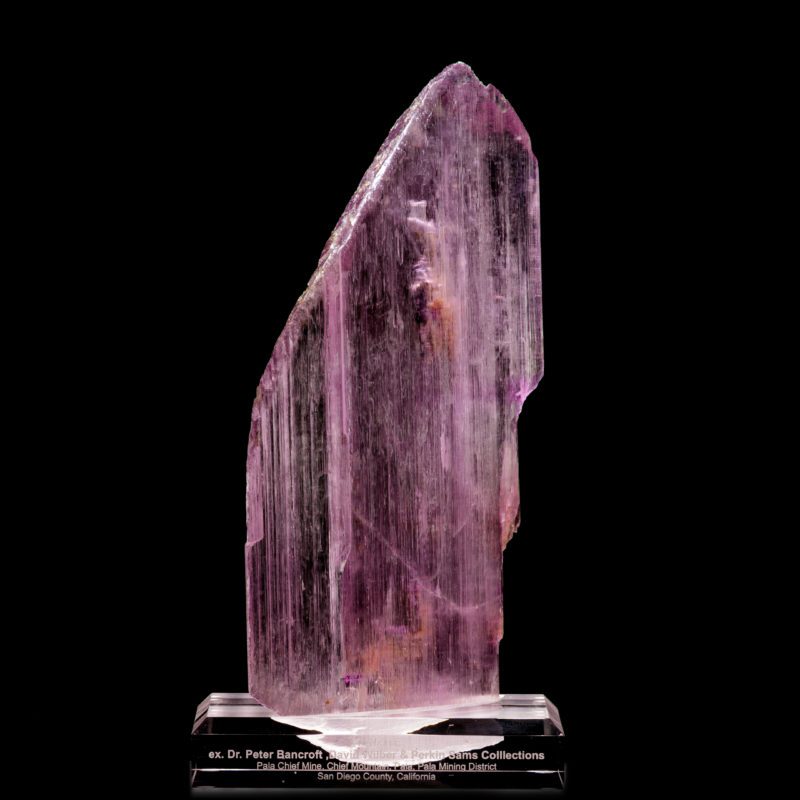
of Peter Bancroft to Dave Wilber to Perkin Sams. The Arkenstone photo.
Still undeterred, Frederick and his father filed claims on several mines in the Pala Mountains: Katherina (1902), Vandenburg (1902), Herirat (1903), Lookout (1905), K.C. Naylor (1904) and Affiant (1910).
The Sicklers kept finding shards of the striated, bright lilac-colored gemstone with the pronounced cleavage at their Katerina mine, similar to the finds that had caught Fred’s attention at his White Queen claim. After unsuccessful consultation with local miners and regional jewelers, in 1902, a sample was sent to George Kunz, gemologist at Tiffany and Co., the go-to address in New York for gemstones and jewelry. He identified the crystals as spodumene, and in 1903 H. Charles Baskerville named the mineral “kunzite” for George F. Kunz.
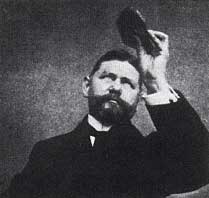
Kunzite was also discovered at the Pala Chief Mine, when John Giddens, Frank A. Salmons, Bernardo Hiriart and Pedro Peiletch claimed the property in 1903. The mine has since been the source of some of the finest kunzite crystals ever found in southern California, as well as exceptional colorless and green spodumene crystals. Bancroft describes the pegmatite of the Pala Chief as “The main horizontal ledge consists of an upper portion of coarsely crystallized feldspar and quartz; a lower stratum of compact granite ‘line rock’ contained black tourmaline, mica, and small garnets. Between the two layers lies a zone of pockets filled with white and pink clay, lepidolite, tourmaline, and morganite”.
In an article by Mark Mauther in a 2011 article of Rock & Minerals, he questions the story of the discovery of kunzite and presents a few hypotheses that the gem variety has indeed been found years earlier at different locations. The author also hypothesizes that it might not have been the Sickler boys who first discovered kunzite, and drops the names of Salmons, Hiriart and Peiletech as possible discoverers (Mauthner 2011B).
A funny anecdote about an incident of high-grading (entering and working a mine without permission of the owner) attributed to the Pala Chief is written up by Bancroft in 1984. He tells the story of “a miner and his buddies” high-grading one of Solomon’s mines, who happens to drive up to his mine. When the mine owner saw the high-graders he fired shots in the air. He had not noticed that his car started rolling backwards down the hill, and the high-graders remember seeing Solomons chasing his car, and “they never learned of the fate of the automobile”.
It is interesting that Bancroft tells the exact same anecdote in his 1995 Sickler family history. In that version, “one day early in the morning” another San Diego County legend named George Ashley (who would later purchase several Pala pegmatite properties) is the high-grader on one of the Sickler properties, and it is Frederik Sickler who fires shots and chases his car. The ending is the same as “… there is no record of what happened to the car”.
Another anecdote told by Bancroft is that sometime later, when the widow of Frank Salmons took over the Pala Chief, she “hired a man named Rene as her foreman to oversee a crew of Indian muckers”. The story goes that Rene, an opportunist, realized that the worker mucked out a gem area with a high potential, and “told them the ground was no good” and told them work in a different section of the mine. Reportedly, the following morning, “there was a big hole where the Indians had been working”, and a serious amount of Kunzite crystals “had been removed from a major pocket”.
Theft at the Pala Chief and other mines in San Diego County was a recurring problem. High graders would sneak into the mine at night so frequently that they often “were called the ‘night shift.’”
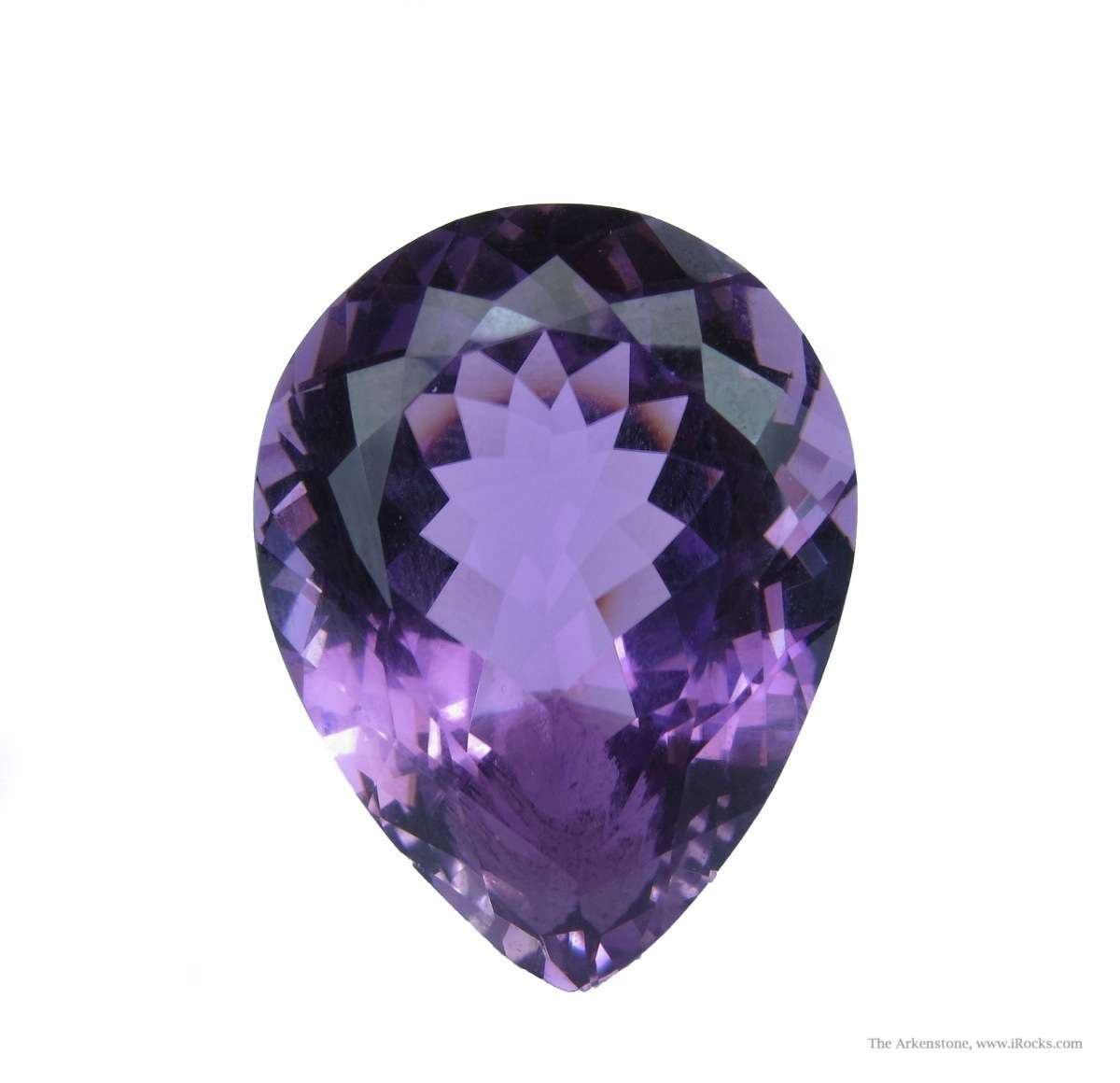
Bancroft relayed that “The Pala Chief was producing the greatest quantity of large lustrous gem-quality kunzite crystals. The largest weighed in at 1.37 kilograms, and six other crystals approached 36 centimeters in length and 13 centimeters in width. Stunning examples are displayed in the collections of Harvard University, the American Museum of Natural History, the Smithsonian Institution, and the California Institute of Technology in Pasadena.”
The story of the Pala Chief One is full of “dreams come true” stories such as the one about the “bridal chamber”, Pala Chief’s greatest pockets. And again it is Bancroft who tells the undated story. The bridal chamber, when dug out, resembled a large bed, probably wishful thinking of the miners dreaming of riches. “Once, when a miner was digging into an overhead pocket, sandlike pegmatite grains began to pour from the opening. Next, gem crystals began to ‘roll out’ including kunzite, green tourmaline, and beryl—a most unusual occurrence of three gemstones in a single vug”. Once the pocket was fully dug out, it had produced blue and rose-pink bicolored beryl crystals deemed “the best ever found in San Diego County”. The crystals from this find rivaled the fine bicolored beryl crystals found in the state of Minas Gerais in Brazil.
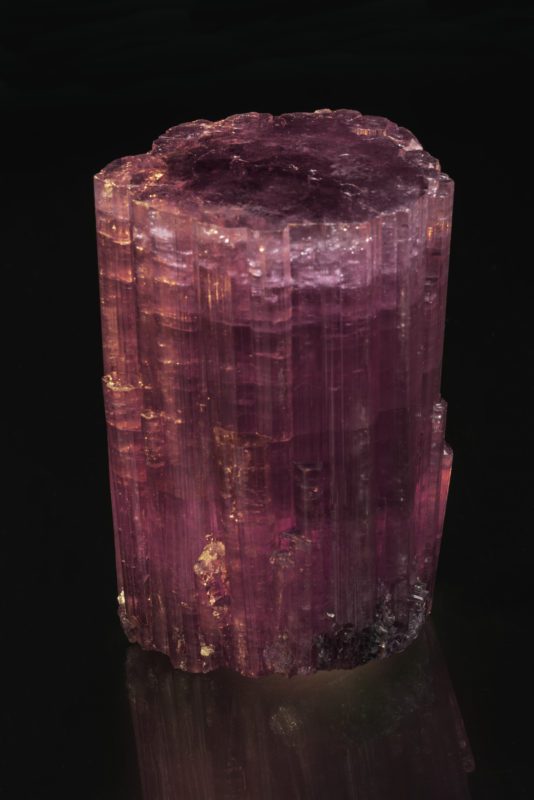
The colors of the tourmaline with crystals up to 30 by 9 centimeters from the Pala Chief, ranging from “light pink to the rich red rubellite variety” attracted the attention of local Chinese jewelers, who provided the much-coveted pink tourmaline to the Chinese imperial court and the expanding Chinese market (and for the personal taste of the Chinese Empress CiXi). Two of those individuals are recorded in history: San Diego jeweler Hom Bing, and members of Ah Quin family, also from San Diego, bought large amounts of tourmaline crystals since the late 1890s. A quote of Hom Bing who sent the red tourmaline to his father in China where they were cut into snuff bottles and carvings, is quoted in Bancroft for saying “I give you twenty dollars a pound and you sell me all the stones you get like that”. The demand in China for gem quality tourmaline that could be used in carvings was very high, and the mines of the Pala District, including the Himalaya Mine were reliant on the Chinese market.
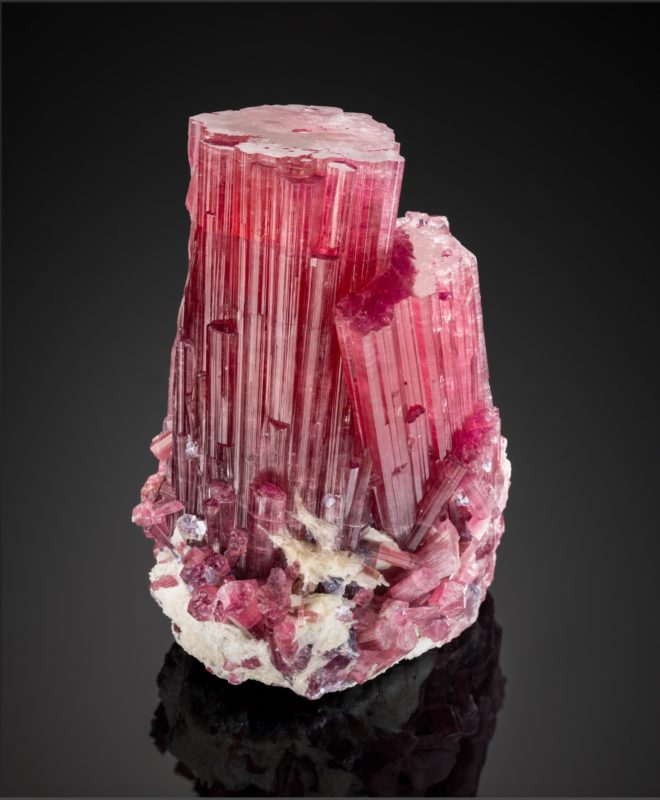
In fact, street names of part of San Diego still reflect this dependence on mineral trade with China in the names of the cross streets as you go down Garnet Avenue from the hills to Pacific Beach, crossing streets with names like Quartz and Feldspar on the way to Mission Beach, which used to have a pier. Mineral collector and author John Sinkankas always said he loved living on a mineral street with so much history, even if largely forgotten by the locals.
By 1912, the Southern Californian gemstone mining had collapsed for a number of reasons: the demise of the Chinese monarchy in 1911; the labor shortage due to America’s involvement in WWI; and George F. Kunz’s tireless marketing of gemstones which caused a glut on the market; and later the Great Depression.
Pala Chief was closed in 1914, and mining in the Pala Mountains lay dormant until in 1947, George Ashley bought up most of the former Sickler claims on Heriart Mountain: San Pedro, Anita, Katerina, Vandenberg, Fargo, Naylor, Heriart, El Molino, and White Queen.
It goes without saying that there is an anecdote about how Ashley got the funds for the purchase. And this time Jesse Fisher from San Francisco tells it: “Legend has it that Ashley raised the money needed to purchase the claims through the sale of gem material he clandestinely collected from the mines while Sickler still owed them.” If that does not sound familiar go back to paragraph four.
The slide collection of Josie Scripps holds a number of incredible photos of George Ashley from the 1950s and 60s, who quickly turned over of most of the mines by selling most of them to Charles Reynolds in 1948, with the White Queen going to Norm Dawson and Ahley only kept the Katherina and the Vandenberg, where during his tenure in the 1950s, “… he made several important finds”. Reynolds got lucky in 1951 when he encountered “a very large pocket with gem kunzite”, and Dawson did not touch the White Queen until 1959, and until 1973, he “encountered a number of major pockets containing superb specimens of morganite on cleavelandite and some very large quartz crystals.”
Not much is known about the Pala Chief from 1914 until the late 1950s when Fielder Fitzsimmons and William Adams reactivated the mine, but the time seemed to have been uneventful. In 1966, Albert C. Ordway and partners took over until in 1968, Ed Swoboda from Los Angeles who provided the Hollywood film industry with costume jewelry, purchased the Pala Chief with the Stewart and Tourmaline Queen. In the years between 1969 and 1972, the Pala Chief was worked with heavy equipment, and turned out to be a very successful specimen producer under the ownership of Pala Properties, a partnership of Ed Swoboda with Bill Larson from Fallbrook. In 1976, the mine was solely owned by Larson. In 1980, limited mining activities were reported on Hiriart Hill by George Ashley, Norman Dawson, William Magee and Roland Reed, and Fisher reports that “Unsuccessful attempts to reopen the Pala Chief mine were made by several parties during the latter part of the 20th century”. By then it was generally accepted that the major pockets of the Pala Chief had been exhausted.
The mine was owned by Bob Dawson from the 1980s through 2011, and between 2001 and 2003, he found several small pockets with a limited number of excellent specimens. The most notable is a plate of well-formed smoky quartz, microcline, and cleavelandite crystals with a large pink and blue tourmaline perched on one side. Learn more about the history of the Pala Chief mine.
Author/photographer Mark Mauthner tells the exciting story of a spectacular find at the Oceanview Mine, when at the turn of the year 2009/2010. A pocket was opened where spectacular spodumen, smoky quartz and black tourmaline were recovered by miner Steve Carter and Jeff Swanger.
In 2010, the Elizabeth R Mine, which was owned and operated by Roland Reed, and the Oceanview Mine, run by Jeff Swanger, merged into one big complex on Chief Mountain. It is open for tourists as a fee dig site on weekends: https://digforgems.com/.
In 2011, the Pala Chief was sold to Oceanview Mines, LLC. Owner Jeff Swanger, who was also a speaker at the 2016 Dallas Mineral Collecting Symposium. He promises on the website of the mine that “A visit to the Oceanview Mine allows you a unique view of the only actively working underground mine in the world famous Pala Gem mining district and a chance to find your own gems—tourmalines, kunzites, morganites and more.”
More recenly, Swanger sold the claim to a private owner, though he remains an active and significant part of the management team.
Love minerals and crystals from San Diego county? Check our currently available crystals from mines like the Little Three mine, the Himalaya mine, the Tourmaline King mine, and more.
References:
Bancroft, P. (1984) Gem & Crystal Treasures. 102–105. Western Enterprises Mineralogical Record.
Bancroft, P. (1995) The Sickler Family: Historic San Diego County Gemstone Miners. The Wrangler. San Diego Corral of the Westerners. Vol. 28, 1-7.
Fisher, J. (2008). Gem Pegmatities, Southern California. In American Mineral Treasures. 187-195. East Hampton, Connecticut: Lithographie LLC.
Mauthner, M. (2011A) Recent Finds at the Oceanview Mine Pala District San Diego County California. Rocks & Minerals, Vol. 86/1. 41-47.
Mauthner, M. (2011B) The History of Kunzite and the California Connection. Rocks & Minerals, Vol. 86/2. 112-131.
